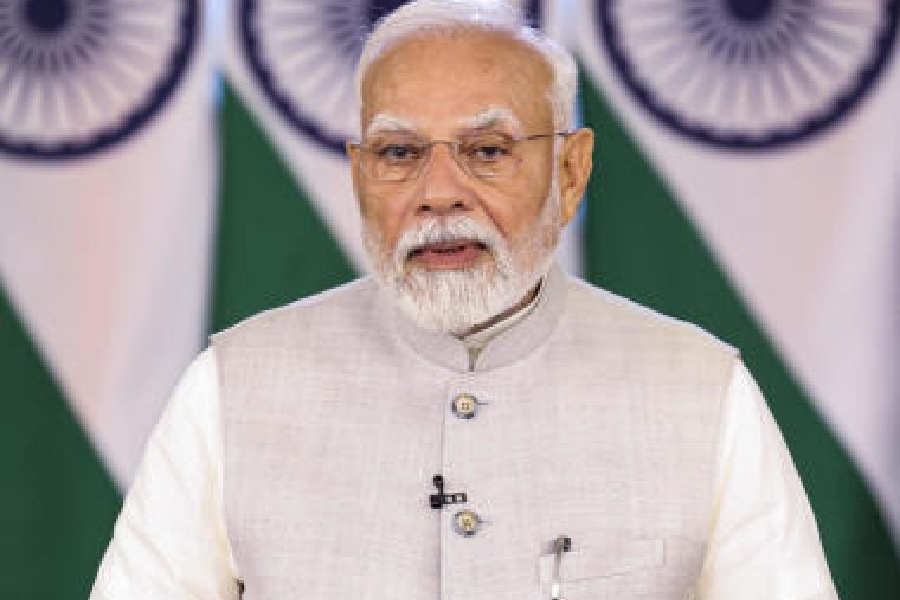Calcutta, June 8: Budget Rs 600 crore, spent Rs 14 crore.
That, in a nutshell, sums up the state irrigation department’s efforts to shore up the 3,500km-long girdle of embankments over rivers, channels and creeks in the Sunderbans before Aila swirled in.
“We knew the floods were coming, but not the cyclone,” said a senior official of the department.
So when Aila struck, it tore a hole in the embankments in as many as 920 places.
After the calamity, which left tens of thousands home- less and killed more than a hundred people across the state, repair work has started at just 130 points.
Officials in the state secretariat said there was not enough soil and manpower, but the excuse leaks when the story from the ground unfolds.
Over the past eight-nine months, many rural poor did not turn up for soil excavation work — a must for constructing embankments — as they were asked to produce employment guarantee act (NREGA) job cards.
Some refused to work when told that they would get wages only if they had accounts in banks or post offices.
Even pitching of boulders along the coastline had been virtually stopped by the government after a change of guard in panchayats in South 24-Parganas after last year’s panchayat polls.
“With only four sub-assistant engineers and one work assistant of the irrigation department supervising operati-ons of 14 blocks, is it possible to do flood-control work? Infra- structure and embankment work had hardly been done since last September,” said a senior department official.
The result: of its Rs 600-crore budget, the department spent just Rs 14 crore till March this year for embankment protection and anti-erosion work.
After Aila, the department has spent about Rs 90 crore, or 15 per cent of its budget.
Sources said that despite a Rs 130-crore assistance from rural development bank Nabard over the past three years for embankment protection and flood control, the irrigation department could not complete projects worth more than Rs 75 crore.
It forced chief minister Buddhadeb Bhattacharjee to admit that the department hadn’t done its job properly.
“Floods have been occurring almost every year…. But… of the 137 flood-related projects for which central aid came, the state government couldn’t start work on at least 80,” said an irrigation official.
Apart from the Nabard aid, the Union government had given additional assistance of Rs 54.5 crore for “flood man- agement” last year, while the 12th Finance Commission gave Rs 47.5 crore.
Asked why the department couldn’t complete embankment protection work all these years, irrigation minister Su-bhas Naskar said: “First, we cannot do embankment work during monsoon which gobble up nearly five months of a year. Second, it requires a lot of money. The amount of central aid needs to be raised.”
The minister said money remained “unspent” also because of non-availability of contractors on time. “Moreover, many people didn’t want to part with their land and, hence, soil needed to create embankments was not available in adequate quantities. Besides, we have to keep in mind that the devastation of the nature caused by cyclone Aila never happened in our state.”
A look at last year’s targets reveals the reality. If the target was to strengthen 151km of existing embankments, the figure achieved was a little over 70km.
Sources said irrigation experts and officials of the Ganga Flood Control Commission had repeatedly urged the government to focus on constructing embankments 14 to 22 feet high. But minister Naskar said for “such a height”, the department would need Rs 3 crore for construction of a kilometre of embankment. “Where will the money come from?”











